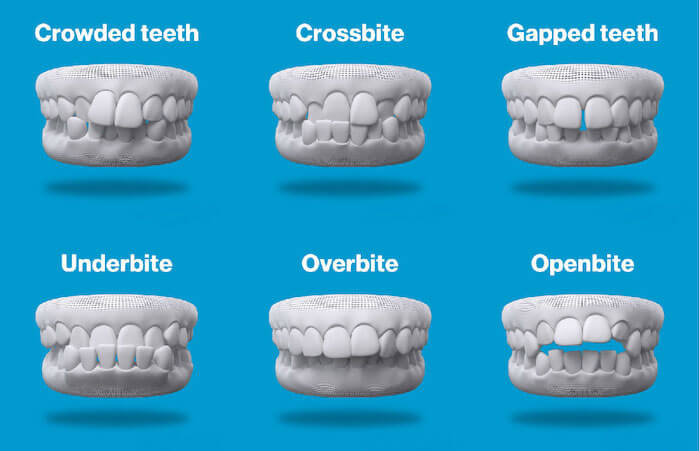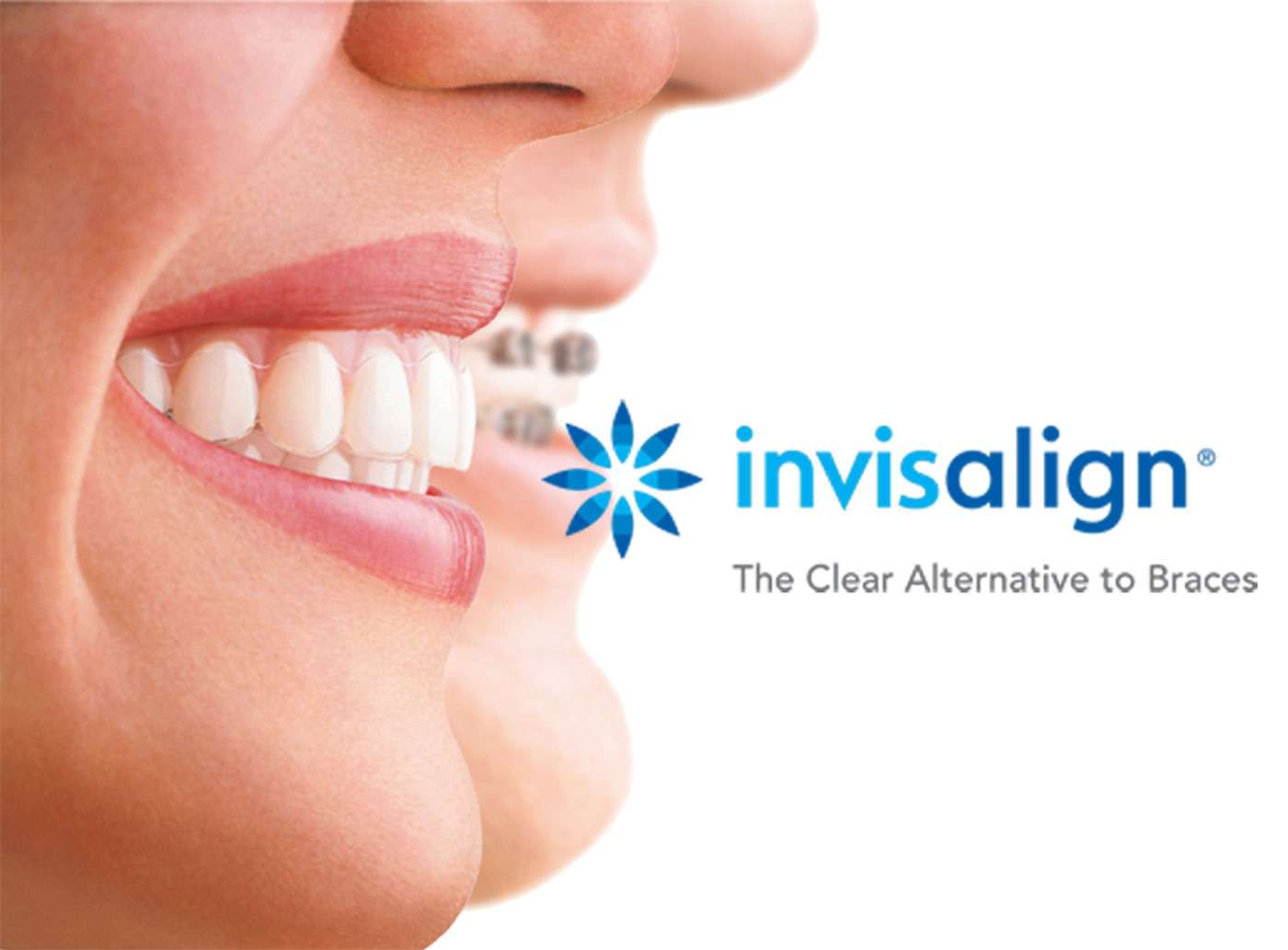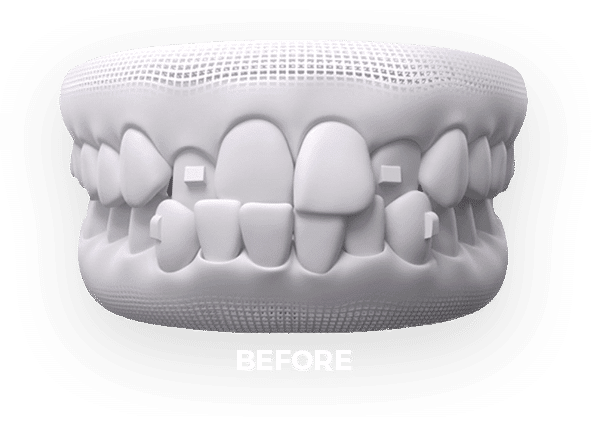Keeping Oral Health While Making Use Of Invisalign: Tips for a Smooth Experience
Keeping Oral Health While Making Use Of Invisalign: Tips for a Smooth Experience
Blog Article
Invisalign vs. Standard Braces: Which Alternative Is Right for You?
When taking into consideration orthodontic therapy, the option in between Invisalign and standard braces presents several vital variables that warrant cautious examination. Invisalign provides a discreet choice with detachable aligners, while conventional dental braces provide an extra noticeable yet efficient solution for extreme misalignment.
Summary of Treatment Options

In contrast, standard dental braces include metal brackets and cords that are bonded to the teeth. This technique uses constant stress in time to accomplish placement. While effective for complicated orthodontic concerns, typical braces need routine check outs for changes and can pose difficulties in maintaining dental health because of the difficulty of cleaning about cords and braces.
Both alternatives have their benefits, and the option commonly rests on particular oral problems, way of living choices, and patient compliance. Ultimately, seeking advice from an orthodontic professional is essential for identifying the most suitable treatment strategy customized to specific demands. Comprehending the nuances of each option can substantially affect the general success of orthodontic treatment.
Aesthetic Considerations
A significant variable influencing the option between Invisalign and traditional dental braces is the aesthetic appeal each therapy provides. Invisalign aligners are crafted from clear plastic, making them essentially unnoticeable when worn.
On the other hand, standard braces are composed of metal brackets and cords, which can be much more noticeable. While innovations in orthodontic innovation have actually caused the development of smaller sized brackets and tinted elastics, conventional dental braces still maintain an even more conspicuous account. For some individuals, the visibility of braces might discourage them from looking for required treatment.
Ultimately, the option between Invisalign and standard braces might rest on individual choices regarding looks. Clients that focus on discretion frequently favor Invisalign, while those who are much less worried about exposure might opt for typical braces. Recognizing the visual implications of each choice is critical for making an informed decision that lines up with one's way of living and preferences.
Comfort and Convenience

In regards to benefit, Invisalign aligners are removable, enabling patients to appreciate their favorite foods without restriction and keep optimum dental hygiene. Cleaning and flossing are streamlined, as the aligners can be gotten during these regimens, whereas conventional dental braces need careful steering around cords and braces.
Additionally, Invisalign's dynamic system permits fewer orthodontic visits. People normally receive numerous collections of aligners at the same time, which can simplify the treatment procedure and minimize time spent in the orthodontist's chair. On the other hand, conventional dental braces require regular changes, making them less convenient for those with hectic schedules. Invisalign. On the whole, the convenience and comfort of Invisalign make it an attractive choice navigate to this website for lots of individuals looking for orthodontic therapy.
Therapy Duration and Performance
While both Invisalign and standard braces are efficient in correcting oral misalignments, the period of treatment can differ substantially in between the two alternatives. Normally, Invisalign treatment can take anywhere from 12 to 18 months, depending upon the intricacy of the case. The clear aligners function by slowly moving teeth right into their wanted positions, and regular follow-ups with an orthodontist assistance make sure progress stays on course.
On the other hand, traditional braces frequently need a longer commitment, normally varying from 18 months to 3 years. This results from their set nature and making use of cables and braces, which can be extra effective for intricate instances and extreme imbalances (Invisalign). The therapy performance of typical dental braces is well-documented, as they permit precise adjustments and greater control over tooth movement
Ultimately, the option in between Invisalign and standard braces may rest on both the anticipated treatment period and the details oral problems available. Consulting with an orthodontist is critical, as they can provide customized recommendations based on individual needs, ensuring the picked technique lines up with desired timeframes and results.
Expense Comparison and Insurance Alternatives
Expense plays a significant duty in the decision-making procedure for individuals thinking about orthodontic treatment, whether choosing for Invisalign or conventional braces. On standard, the expense of Invisalign ranges from $3,000 to $8,000, while typical braces generally set you back between $2,000 and $6,000. Elements influencing these prices include the intricacy of the case, the period of treatment, and geographical area.
Insurance coverage can dramatically affect out-of-pocket expenditures. Numerous oral insurance coverage strategies supply partial insurance coverage for orthodontic treatments, yet the specifics can vary extensively. It is essential for people to evaluate their insurance coverage to establish the degree of insurance coverage for either option. Normally, traditional braces might be more often covered by insurance strategies contrasted to Invisalign, which some insurance companies classify as a cosmetic procedure.
Furthermore, a number of orthodontic techniques use versatile layaway plan, making both treatment options a lot more accessible. Individuals must inquire concerning potential financing options and discount rates for in advance repayments. Assessing the overall expense, consisting of insurance policy advantages and settlement strategies, is crucial for making an educated decision that aligns with both aesthetic choices and budget considerations.

Conclusion
In summary, the choice in between Invisalign and traditional dental braces pivots on numerous aspects, including visual choices, comfort, treatment period, and price. Invisalign supplies a very discreet, removable option that helps with oral hygiene and nutritional adaptability, while standard braces click now may be better for complicated dental problems and typically come at a reduced rate point. Ultimately, consultation with an orthodontist is necessary to assess individual circumstances and establish one of the most suitable therapy choice for achieving optimum oral alignment.
When thinking about orthodontic treatment, the selection between Invisalign and typical dental braces presents numerous essential factors that warrant cautious evaluation.Contrasting Invisalign and conventional braces exposes distinct treatment options Get More Info for orthodontic improvement.While both Invisalign and conventional braces are reliable in remedying oral misalignments, the period of treatment can differ dramatically between the 2 choices.Price plays a considerable duty in the decision-making process for people considering orthodontic therapy, whether deciding for Invisalign or conventional dental braces.In summary, the selection in between Invisalign and conventional dental braces hinges on several variables, including aesthetic preferences, comfort, treatment duration, and expense.
Report this page